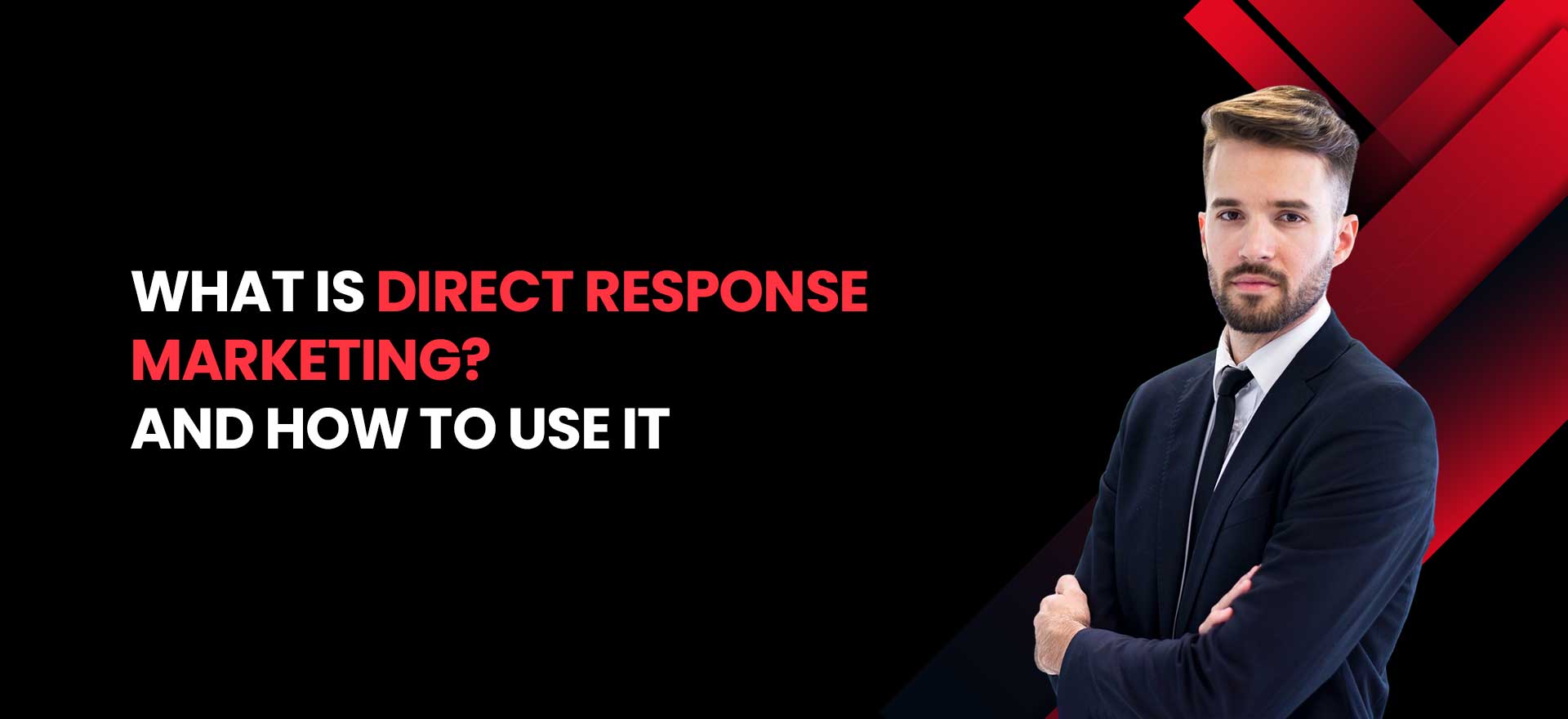Direct Response Marketing is a powerful and practical way through which businesses get instantaneous, measurable responses from their target market. Fast action implementation is the essence of DRM, unlike traditional brand marketing that lingers for engagements in the long run. One of the best features of DRM is that it encourages an immediate action from the visitors through its many channels, whether that be through an email campaign, digital advertisements, or a TV commercial. The immediate response would therefore mean good earth-shattering business growth.
This article aims to discuss what direct response marketing is all about, its benefits, and how it can be applied by businesses for their own good.
What is Direct Response Marketing?
Direct response marketing, at its core, represents a very specific form of marketing that is intended to elicit an immediate response from the consumer. The stated purpose is to get the prospect to take some specific action now; for instance, going online, subscribing, or buying something. This feature of immediate response draws a clear distinction between DRM and classic brand marketing. Brand marketing emphasizes a long-term approach toward enhancing brand recognition and awareness.
Through direct response marketing campaigns, businesses leave little to chance and employ clear calls to action directing the desired response: for example, “Buy Now,” “Sign Up Today,” or “Call to Learn More.” Usually accompanied by a brief-term offer or stimulus, these campaigns go a long way in persuading a consumer to take swift action.
5 Key Benefits of Direct Response Marketing
Businesses employ direct response marketing for predominantly five reasons. Here are five key benefits:
-
Increased Conversion Rates
DRM campaigns are set to incite instant action. By focusing on an enticing offer and compelling call to action, these campaigns are bound to set better conversion rates than traditional marketing. For instance, an email from a company running a limited-time discount offer would suggest urgency and prompt immediate action from the recipient.
-
Measurable Results
One major plus point with DRM is the ability to get measurable results. Each of these campaigns is traced back so that one can see what works and what does not. This automation provides the manager/s with opportunities to constantly optimize their tactics for better results.
-
Better Targeting
Direct response marketing is heavily driven by data analytics and customer segmentation. This allows marketers to use customer-behavior insights to target their messages to particular audience segments. This ensures that the right message goes to the right people at the right time to increase the chance of conversion.
-
Invaluable Customer Insights
Direct interaction with customers entertains a plethora of valuable feedback to businesses about what works and what does not. Knowing customer likes and dislikes, pain points, and purchasing behavior can help marketers to strategize for the future while maintaining that personalized touch in an efficient way.
-
Flexibility and Speed
DRM campaigns can be adjusted literally on the run. In the case that one such undertaking is not doing well, the business can quickly adjust its message or offer, thus capitalizing on passing trends in the market and variations in consumer behavior.
5 Effective Channels for Direct Response Marketing
There are several ways for companies to employ direct response marketing. Here are five popular ones:
-
Email Marketing
Email marketing is the most effective direct response campaign channel. It permits businesses to message targeted, personalized messages directly to consumers. Whether it’s offering a discount or promoting a new product, email marketing encourages immediate actions, such as purchases or sign-ups. Additionally, it provides valuable data to track opens, clicks, and conversions.
-
Social Media Advertising
Facebook and Instagram as well as LinkedIn operate best with fantastic targeted advertising for a direct response campaign. Highly personalized through a very specific selection of demographics, such ads directly affect business. Users’ immediate reaction increases significantly with interactivity on the platforms, and they fit perfectly into campaigns that immediately trigger a response.
-
SMS
It has been established that SMS marketing is a great method for direct-response marketing due to its very high open and response rate. Text messages are brief and often associated with time-wasting offers that can inspire response as quickly as possible. SMS marketing can actually be the best example of sending out reminders on special limited-time offerings.
-
Direct Mail
Few effective means remain in the field of DRM, but the most developed one was direct mail. Personalized letters, postcards, or catalogs will definitely draw attention to the mailbox and impulse actions like visiting a website or calling a toll-free number. The tangible nature of direct mail gives it an immediacy felt more personal and urgent.
-
Telemarketing
Although telemarketing takes a lot of time, it allows the potential customers to interact with the salesperson in a real and personal way. This, in turn, allows businesses to address objections and push prospective customers along the path to conversion. Telemarketing works best when selling something with a high ticket price or when it requires direct persuasive contact with the consumer.
4 Steps to Creating an Effective Direct Response Marketing Campaign
Follow these next 4 important directions to create a successful DRM campaign:
-
Align Campaigns with Customer Needs
The successful direct-response campaign is focused on solving a customer’s problems, needs, or wants. Thus, instead of just selling your product, change your signatory to carter for specific customer pain points. The more relevant it is, the more likely people will engage.
-
Target Different Segments with Personalized Messages
Segregation based on demographics, behaviors or preferences and using data analytics. Personalization in messaging creates a scenario that meets the unique needs of each cluster. They do have good chances of success for the personalized campaigns since they resonate definitely better in the target audience’s heads.
-
Include Clear and Compelling Calls to Action (CTAs)
Your call to action should be precise, brief, and quite noticeable. The CTA must be either specific or actionable- like Shop Now, Get 20% Off Today, or Sign Up for Free. In fact, without a clear CTA, such a marketing campaign can hardly expect to walk on solid ground.
-
Instill Urgency
At DRM, nothing drives as much as urgency. A countdown, a limited-time offer, or some “while supplies last” messages will lead the audience towards an action before the opportunity is closed. They can get the action started and thus raise the conversion rates.
Best Practices in Direct Response Advertising
You will find direct response marketing examples that adopt these best practices:
-
Make the Response Process Easy
Make it easier for consumers to be able to act on. Minimize form-filling and tempted process, such as using one-click sign-ups, easy-to-find phone numbers, or direct links to landing pages. The simpler the process, the more likely there is a positive response.
-
Use Compelling Copy
Grab the attention to your message immediately. Send short, engaging, and benefit-driven copy on communicating value and encouraging action right away. Focus on how your product or service will make the customer’s life better, easier, or more enjoyable.
-
Follow Up
Follow-up is crucial to ensure that your leads convert into sales. After an initial response, engage your audience through email, phone calls, or additional offers. Following up in a timely, personalized manner can significantly boost conversion rates.
Conclusion
Direct response marketing is a powerful tool for businesses looking to achieve immediate, measurable results. By leveraging various channels like email marketing, social media, and SMS, businesses can drive conversions and accelerate growth. With clear calls to action, personalized messaging, and urgency, DRM can help businesses generate leads, increase sales, and engage customers effectively. The key to success lies in continuously optimizing your campaigns to deliver the right message to the right audience at the right time.
Now that you know what is direct response marketing, by using the strategies outlined above, you can create campaigns that not only drive results but also build stronger relationships with your customers, ensuring long-term success.




